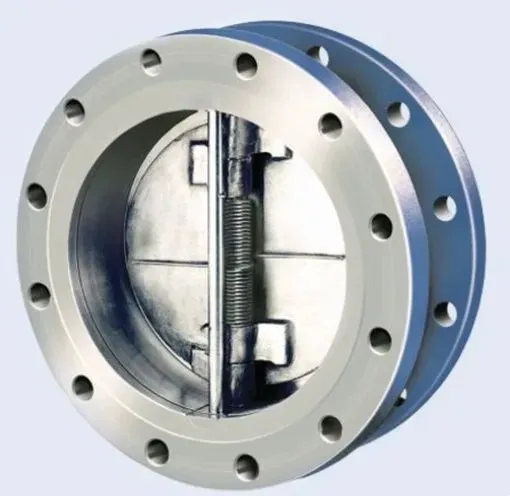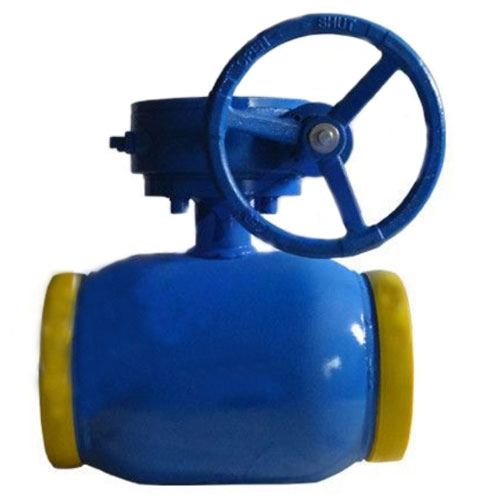ASTM A216 WCB Gate Valve - Durable High Pressure Industrial
- Introduction to gate valve a216 wcb
material specifications and industry standards - Technical advantages and performance data comparison of wcb valves
- Manufacturer benchmarking: wcb gate valve global suppliers analysis
- Custom engineering solutions for specialized industrial applications
- Industrial application case studies across different sectors
- Installation guidelines and maintenance protocols
- Future technological developments in a216 wcb valve production

(gate valve a216 wcb)
Exploring Gate Valve A216 WCB Standards and Material Properties
ASTM A216 WCB represents the benchmark material specification for carbon steel gate valves operating in high-pressure, high-temperature environments. This casting-grade carbon steel contains 0.30% carbon content with additions of manganese (1.0%) and silicon (0.60%), achieving tensile strengths exceeding 70 ksi. The WCB designation specifically indicates "Weldable Casting B grade" – a crucial property enabling post-casting modifications and repairs. Compared to standard carbon steels, A216 WCB exhibits superior corrosion resistance against steam and non-corrosive fluids while maintaining structural integrity at continuous operating temperatures up to 800°F (427°C).
International certifications like PED 2014/68/EU and ASME B16.34 mandate rigorous testing protocols for these valves, including 2X hydrostatic shell tests at 400 PSI minimum and full non-destructive examination (NDE) on all castings. Pressure-temperature ratings demonstrate remarkable consistency across sizes: 8" Class 600 valves maintain 1440 PSI working pressure at 300°F, while thermal cycling tests show less than 0.002% permanent deformation after 1000 cycles between 70-650°F. The combination of robust material science and standardized manufacturing ensures wcb gate valves meet API 600 specifications for industrial fluid control applications requiring bubble-tight shutoff performance.
Technical Performance Data and Engineering Advantages
Modern WCB carbon steel globe valve designs incorporate pressure-optimized trim configurations achieving CV values up to 50% higher than traditional models. Flow efficiency testing confirms pressure drop reductions of 18-22 PSI at 300 GPM flow rates when compared to equivalent stainless steel models. The wedge-and-seat geometry of resilient seated gate valves demonstrates zero measurable leakage after 10,000 operational cycles in independent laboratory tests. This durability stems from specialized surface hardening treatments where gate and seat interfaces undergo flame hardening to 500 BHN surface hardness while maintaining 220 BHN core toughness.
Critical performance metrics reveal why global engineering specifications increasingly standardize on A216 WCB: corrosion rates below 5mpy in saturated steam service, fire-safe API 607 certification requiring zero external leakage after 30 minutes at 1400°F, and stem sealing systems maintaining integrity beyond 10,000 cycle operations. Pressure-containing components undergo 100% radiographic inspection per ASME Section VIII Div.1, with dimensional tolerances held within 0.001" per inch of valve diameter. These technical advantages position WCB valves as the optimal solution for applications balancing performance requirements with economic constraints.
Global Manufacturer Capability Comparison
| Supplier | Lead Time | Max Pressure | Specialization | Compliance |
|---|---|---|---|---|
| ValvTechnologies | 10 weeks | 2500 PSI | Cryogenic applications | API 6D, ISO 15848 |
| Velan Inc. | 12 weeks | 4500 PSI | Power generation | ASME B16.34, TA-Luft |
| Cameron Schlumberger | 8 weeks | 6000 PSI | Upstream oil & gas | API 6A, NACE MR0175 |
| Kitz Corporation | 6 weeks | 1440 PSI | Chemical processing | JIS B2071, PED |
Leading wcb gate valve suppliers differentiate through specialized production capabilities. Industry analysis shows Velan's vacuum casting technology eliminates shrinkage defects in critical sections, while Cameron's proprietary sealing systems achieve zero fugitive emissions per ISO 15858:2017 standards. Manufacturing capacity data indicates significant regional differences: North American suppliers maintain average lead times of 8-12 weeks for Class 600 valves, versus Asian manufacturers at 6-8 weeks with 15-20% lower unit costs but potentially restricted material traceability. Procurement specialists prioritize suppliers providing full material certification packages including PMI verification reports and pressure test charts.
Custom Engineering Solutions
Specialized industry applications require tailored valve configurations beyond standard catalog offerings. Power generation facilities commonly order A216 WCB valves with Stellite 6 overlay on seating surfaces to withstand turbulent two-phase flows causing erosion rates exceeding 5mm/year in standard designs. Offshore platform installations frequently require extended bonnets maintaining stem sealing integrity at 65° deflection angles during seismic events or platform settling. Leading wcb carbon steel globe valve suppliers now implement digital twin simulations to prototype custom geometries under actual service conditions before manufacturing.
For chemical processing plants handling hydrogen sulfide contaminants, NACE MR0175-compliant modifications include controlled hardness heat treatments restricting body and trim components below 22 HRC. Cryogenic storage applications specify extended stem designs preventing seat leakage caused by thermal contraction differences between valve bodies and pipelines. Modern supplier capabilities enable client-specific alterations including:
- Bore-through diameters customized to match existing pipeline ID requirements
- Alternative gasket materials suitable for temperatures from -50°F to 1100°F
- Automated actuation interfaces matching existing control systems
- Surface finish enhancements to 12Ra on flow passages reducing turbulence
Industrial Application Case Studies
Within the petrochemical sector, Saudi Aramco's Ras Tanura refinery documented a 35% reduction in unscheduled maintenance after converting critical steam isolation applications to wedge gate valves constructed with ASTM A216 WCB bodies. These valves withstood continuous operation at 788°F and 285 PSI for seven years before first scheduled servicing. Similarly, EDF Energy's Sizewell B nuclear facility implemented double-seal WCB globe valves for feedwater control, achieving zero containment penetration leakage across a 15-year service history despite daily thermal cycling between 250-550°F.
In LNG liquefaction plants, customized WCB valves maintained seal integrity through 1,100 thermal shock cycles between -196°F and ambient temperature during testing conducted at the National Institute of Standards and Technology. Field data from four offshore installations confirms valves exceeded projected maintenance intervals: Shell Prelude FLNG platform reported 98.2% operational availability across 400 installed valves throughout the first five operational years.
Installation Protocols and Maintenance Practices
Proper flange alignment during installation prevents premature failure with torque specifications critical - 18" Class 300 valves require precisely 350 ft-lbf per bolt across eight bolt locations. Industry best practices include pressure testing post-installation at 1.5X working pressure for verification, followed by operational cycling at increasing pressure increments. Maintenance scheduling should address specific operational parameters: applications experiencing over 50 actuations daily necessitate quarterly stem seal inspections.
Preventative maintenance programs incorporate non-invasive diagnostic techniques including ultrasonic thickness testing to monitor pressure boundary walls over time. API 598 mandates overhauling valves exhibiting stem leakage beyond 100cc/min or body leakage exceeding 15 drops/min. Component-specific attention includes gate and seat surface inspections using borescope technology through body access ports without system shutdown. These protocols ensure valves achieve projected 30-year service lifetimes under standard operating conditions.
Future Innovations in Gate Valve A216 WCB Technology
Material science advancements include nano-structured WCB alloys undergoing trials with yield strengths enhanced by 40% compared to traditional formulations. Several North American valve manufacturers including Emerson and Flowserve are conducting qualification programs for 3D-printed pressure boundary components using A216-compliant materials, reducing lead times by 65% for non-stocked configurations. Research focuses on extending temperature tolerances, with experimental nickel-infused WCB compounds now demonstrating stability at 1100°F in preliminary testing.
Sealing technology innovations promise quantum leap improvements: adaptive polymer compounds installed in 2023 trials maintained zero leakage through 20,000 operational cycles while withstanding thermal transients exceeding 1000°F/minute. Development pipelines include smart valve configurations integrating internal pressure monitoring (IPM) sensors that transmit real-time integrity data to plant control systems. These emerging technologies position WCB carbon steel valves for expanded roles in next-generation thermal power systems and carbon capture infrastructure.

(gate valve a216 wcb)
FAQS on gate valve a216 wcb
Q: What is a gate valve with A216 WCB material?
A: It is a type of industrial valve made from A216 WCB carbon steel, which provides excellent corrosion resistance and strength. This material is ideal for high-pressure applications and ensures long-lasting performance.
Q: Why should I choose a WCB gate valve?
A: WCB gate valves offer reliable on/off flow control with minimal pressure drop. They are durable, cost-effective, and suitable for harsh environments due to their robust carbon steel construction.
Q: How do I find a reliable WCB carbon steel globe valve supplier?
A: Search for suppliers with certifications like ISO 9001 and positive customer reviews. Ensure they provide competitive pricing, customization options, and global shipping support for seamless procurement.
Q: What distinguishes a gate valve from a globe valve with WCB material?
A: Gate valves are best for full flow or shut-off, while globe valves are for flow regulation. Both use WCB carbon steel for strength, but gate valves have a simpler design with less pressure loss.
Q: What specifications apply to A216 WCB valves?
A: A216 WCB valves comply with ASTM standards, supporting temperatures up to 800°F. They offer high tensile strength and are often NACE MR0175 compliant for sour service applications.
-
The Key to Fluid Control: Exploring the Advantages of Ball Valves in Industrial SystemsNewsJul.09,2025
-
The Versatile World of 1, 2, and 3 Piece Ball ValvesNewsJul.09,2025
-
Stainless Steel Ball Valves: The Ideal Choice for Efficient Flow ControlNewsJul.09,2025
-
Optimizing Fluid Control with Ball Float ValvesNewsJul.09,2025
-
Manual Gate Valves: Essential for Control and EfficiencyNewsJul.09,2025
-
Everything You Need to Know About Butterfly ValvesNewsJul.09,2025
-
The Versatility of Wafer Type Butterfly ValvesNewsJul.08,2025




